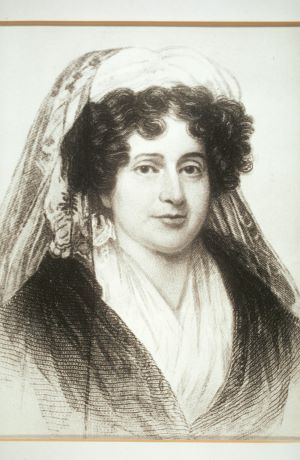Summary | Excerpt | Reading Guide | Reviews | Beyond the Book | Read-Alikes | Genres & Themes | Author Bio

Critics' Opinion:
Readers' Opinion:
First Published:
Feb 2020, 288 pages
Paperback:
Mar 2021, 288 pages
 Book Reviewed by:
Book Reviewed by:
Lisa Butts
Buy This Book
This article relates to The Illness Lesson
 The plot of The Illness Lesson revolves around the establishment of a Massachusetts school for girls in 1871 by a man with ideas about female education that are progressive and experimental for this era. The protagonist's father Samuel Hood believes that his teenage students should be offered the same curriculum as their male peers, including the study of biology, philosophy and literature. Schools that catered to girls/young women in the 19th century were often essentially finishing schools, where students were offered largely moral and domestic instruction (such as sewing and childcare). However, education opportunities for women were expanded through schools like Georgia Female College (1836), Mount Holyoke Seminary (1837) and Elmira Female College (1855), among others, many of which were founded and operated by women themselves.
The plot of The Illness Lesson revolves around the establishment of a Massachusetts school for girls in 1871 by a man with ideas about female education that are progressive and experimental for this era. The protagonist's father Samuel Hood believes that his teenage students should be offered the same curriculum as their male peers, including the study of biology, philosophy and literature. Schools that catered to girls/young women in the 19th century were often essentially finishing schools, where students were offered largely moral and domestic instruction (such as sewing and childcare). However, education opportunities for women were expanded through schools like Georgia Female College (1836), Mount Holyoke Seminary (1837) and Elmira Female College (1855), among others, many of which were founded and operated by women themselves.
The evolution of beliefs about the education of girls and women was aligned with the emergence of the first-wave feminist movement and the work of activists like Emma Hart Willard (1787-1870). Willard was an intellectual prodigy who began teaching at age 17 and went on to open a school for girls called Middlebury Seminary Academy in her own home in 1814. At Middlebury, students learned about science and the classics, among other subjects. In 1821, Willard opened Troy Female Seminary in New York (later called the Emma Willard School), where girls were taught subjects like math, science and history, often learning from textbooks Willard wrote herself.
The seminaries founded by women were a big part of the expansion of young women's education in the late-18th to mid-19th centuries in America. (While today the word "seminary" is usually associated with a school of theology, it was often used at the time to refer to institutions that filled a need for higher education for women.) Catharine Beecher (1800-1878), sister of Harriet Beecher Stowe, became a key figure in this development, founding the Hartford Female Seminary in 1823 with another sister, Mary. Though she was anti-women's suffrage, Catharine believed firmly that girls and women should receive education commensurate to that of boys and men. The Hartford Female Seminary taught a range of subjects, from science to philosophy to, perhaps most controversially at the time, physical education. In addition to teaching, Catharine authored several books, including Calisthenic Exercises for Schools, Families, and Health Establishments. Harriet taught at the school from 1829 to 1832. (Both Catharine and Harriet were educated themselves at Litchfield Female Academy in Connecticut, which was founded by another pioneer in women's education, Sarah Pierce.)
Like Emma Willard, Mary Lyon (1797-1849) began teaching at age 17, in Shelburne Falls, Massachusetts—she was paid about $3 per month while her male peers earned $10-$12. She pursued her own education doggedly throughout her life and gained a wealth of teaching experience, and in 1837 she founded Mount Holyoke Female Seminary in South Hadley. The curriculum at Mount Holyoke was rigorous; women were expected to complete seven courses in science and math before graduation. Lyon taught chemistry and invited her students to take a hands-on approach, conducting their own experiments in a laboratory setting.
The Normal School for Colored Girls (also called the Miner School for Girls) was founded in Washington D.C. in 1851 by Myrtilla Miner, primarily as a teaching school for young African American women, though there was also an attached primary school. Although the school did not have a "radical" curriculum like the others described above, its very existence as a place of learning for Black girls and women was unorthodox for the time. The school was funded in part by Harriet Beecher Stowe. The teaching program became Miner Teachers College in 1929 and was integrated with Wilson Teachers College in 1955; collectively they became the District of Columbia Teachers College.
Emma Willard circa 1805-1815
Filed under Society and Politics
![]() This "beyond the book article" relates to The Illness Lesson. It originally ran in February 2020 and has been updated for the
March 2021 paperback edition.
Go to magazine.
This "beyond the book article" relates to The Illness Lesson. It originally ran in February 2020 and has been updated for the
March 2021 paperback edition.
Go to magazine.





The House on Biscayne Bay
by Chanel Cleeton
As death stalks a gothic mansion in Miami, the lives of two women intertwine as the past and present collide.

The Flower Sisters
by Michelle Collins Anderson
From the new Fannie Flagg of the Ozarks, a richly-woven story of family, forgiveness, and reinvention.

The Funeral Cryer by Wenyan Lu
Debut novelist Wenyan Lu brings us this witty yet profound story about one woman's midlife reawakening in contemporary rural China.
Your guide toexceptional books
BookBrowse seeks out and recommends the best in contemporary fiction and nonfiction—books that not only engage and entertain but also deepen our understanding of ourselves and the world around us.